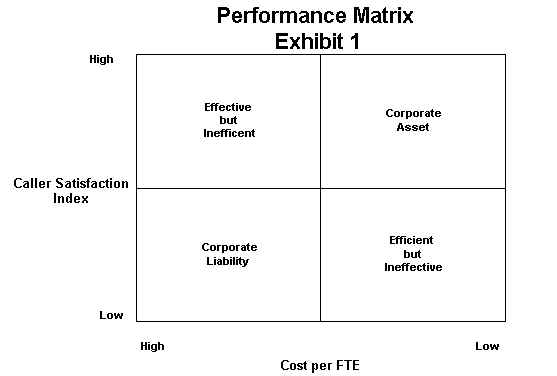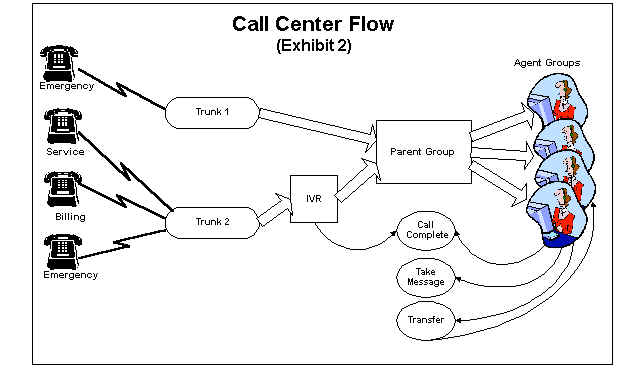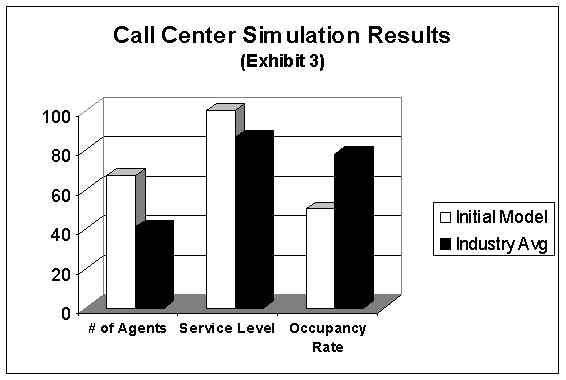|
|
DSC Tech Library
Call Center Technology
 This section of our technical library presents information and documentation relating to Call Center technology and Best Practices plus software and products.
DSC is a leading provider of contact center technology and software solutions as well as predictive dialer phone systems for the modern call center. Customer contact center software includes CRM software and computer telephony integration solutions. These modern products help call center phone agents communicate effectively with your customers and prospects.
This section of our technical library presents information and documentation relating to Call Center technology and Best Practices plus software and products.
DSC is a leading provider of contact center technology and software solutions as well as predictive dialer phone systems for the modern call center. Customer contact center software includes CRM software and computer telephony integration solutions. These modern products help call center phone agents communicate effectively with your customers and prospects.
The following article presents product or service information relating to call centers and customer service help desks.
Optimize Your Call Center Through Simulation
BY BILL HALL, CALL CENTER SERVICES AND
JON ANTON, PURDUE UNIVERSITY
The challenge for today's call centers is providing value-added customer service at the lowest possible cost per customer contact. Let's think of today's call center as having two dimensions of customer service to measure (1) business efficiency and (2) customer effectiveness. These two measures can be put into a performance matrix (see Exhibit) that compares the caller satisfaction index (or CSI) with the call center cost per full-time equivalent (Cost/FTE).1
Call center managers can determine which quadrant the call center is operating in by taking industry-specific benchmark data and comparing it to their call center metrics. Today, many call centers operate in the lower left quadrant of the matrix: the Purdue University benchmark study indicates as many as 50 percent operate in the lowest quadrant.2

If your call center falls in this quadrant, there are several tools in the marketplace that can assist you in becoming a more efficient and effective operation. To ultimately become a world-class call center (upper right quadrant) may require major re-engineering of today's business processes.
Whether you intend to make major changes or minor adjustments to today's processes, you want to be sure it makes economic sense and improves customer service, retention and profitability. Simulation tools can be used effectively to verify and justify change by testing alternative ways of doing things before they are implemented.
In this article we will explore ways you can use computer simulation effectively to evaluate re-engineering plans for your call center.
Introduction To Computer Simulation
In the past few years, simulation tools have begun to emerge in the call center industry. There are two important reasons for this: (1) call centers are extremely complex, and much too important to run by intuition or "gut feel"; (2) simulation tools are being designed specifically for call centers, making them more intuitive and much easier to learn and use.
Let's take a minute to really understand computer simulation. Simulation is a way to create models of real-world processes, in this case study, the call center. A call center model is a logical description of how the many processes of the call center interact and work together.
To develop a call center model, you begin by inputting facts, such as call arrival patterns, the different types of calls, how the calls are routed, the agents (with skills and schedules), the trunk groups, and many more.
Once the model is built, it can "simulate" the actual behavior of the call center over a particular planning period. The outputs are the typical call center metrics that you see every day, for example, the number of calls, average handle time per call, agent utilization, number of abandoned calls, service level, and many more.
Simulation works very well in a call center environment because it is able to generate calls the way they actually arrive at the call center (randomly and in bunches). Second, most simulation tools allow you to document the process graphically and animate it. The result is a model that is easy to understand and accurately "acts like" the call center as you know it. Once the model is established, it can be used time and time again to support and verify important management decisions.
Even if you are meeting your goals, simulation can offer new ways of addressing other issues of concern, leading to more cost-effective ways of processing calls. Because many call centers are in a continual state of change, simulation lets you test the effect of these changes before actually implementing them.
Let's explore in more detail how to use simulation to improve your call center operation. Simulation can be used in two ways as follows:
- First, it can verify where you are. We'll call this the assessment phase. The key question becomes, "How efficient and effective is my operation today?"
- Second, simulation can be used to address "what-if" questions and develop scenarios of how the call center may operate in the future. It provides a means to analyze and measure the impact of changes that occur as a result of new technology, a changing business strategy, increased workload, and more.
This article focuses on the assessment phase. To illustrate how simulation is used in this phase, an actual case study assessment we conducted at a large public utility call center is used as the reference.
The Assessment
The purpose of the assessment was to establish a baseline for change. The assessment benchmarks the call center to industry metrics, analyzes the "current state" and provides a blueprint for the future.
This may involve a complete realignment of the call center and its mission to support the strategic direction of the company. Computer simulation is one tool used to establish a baseline for change. It identifies where the call center is in terms of its "current state" of efficiency and the impact of moving toward the upper right hand quadrant of the performance matrix in Exhibit 1.
The tool we used for this kind of analysis is a product called Call$im produced by Systems Modeling Corporation. Call$im was designed specifically for call centers, giving it a very large advantage over other conventional simulation products. By using Call$im, we were able to generate the initial model in a couple of hours.
The Simulation Process
- Objective
During the assessment phase of our analysis, the objective was to establish a baseline model to represent the call center as it operates today. This model reveals how the call center is performing relative to the number of incoming calls, trunk capacity, routing logic and the number of agents. This was then compared this to industry best-practice metrics. Is it performing up to industry standards and, if not, what is the impact on call center resources if it moves to this required service level?
- Building The Model
With this in mind we built a baseline model. Exhibit 2 provides an overview of that model. We have three main call types coming into the call center. All incoming calls go into a queue and wait for the first available telephone service representative (TSR). Each agent group in the model represents one or more agents who have the same schedule. Since agent groups can have overlapping schedules, the Parent Group (a collection of attached Agent Groups) routes calls to the first available agent. Emergency calls can enter the call center through a direct line or through the IVR. In either case, these calls always go to the front of the queue and get the next available agent.

The IVR handles about 10 percent of the calls. Calls that wait for six minutes without reaching a TSR provide the caller with the opportunity to leave a message. The model assumes that all agents adhere to their schedule and therefore are always available to take calls (except when on a call, on a scheduled break or scheduled lunch).
- Baseline Results
The baseline simulation model provides performance statistics based on the call center's current call volumes, staffing and routing. We use these statistics to compare the simulation data to the existing call center performance reports.
The output from the model indicated that the call center should be performing extremely well, with a service level of nearly 100 percent. It also projected a minimal number of abandoned calls, with an average speed of answer of 15 seconds and an occupancy rate less than 50 percent.
Instead, we found an abandon rate of nearly 30 percent, an average speed of answer of 45 seconds, an occupancy rate of 60 percent and absenteeism of nearly three times the industry average.
The results of this simulation exercise showed that there could be a very high potential for performance improvement.
- What Could The Call Center Achieve
Using the model we just created, we posed the following question: "What is the minimum number of resources necessary (to meet industry best practices) given the current call volume and the way calls are distributed?"
Leaving everything else in the model alone, we adjusted several of the staffing groups. The model tells us agent utilization at each one-half hour, so it is easy to determine where the call center was overstaffed. This process may take several interrations depending on the number of overlapping agent groups.

In a few hours, the model could measure where we were and what it would take to operate the call center at current industry averages. This exercise is just the starting point for re-engineering the call center.
Beyond Assessment
How does simulation play a role beyond the assessment phase? Whether call center management decides to optimize the center's current structure or completely re-engineer it, a new business model will emerge. The process, people and technology will change in some form. Simulation can be used to describe, test and optimize it.
Let's suppose in our public utility call center example that the following changes are being considered.
Agents begin outbound calling to promote new products and services based on buying habits or proactively keeping the customer informed of scheduling changes,
- High volume call days are overflowed to an outside service,
- Service is extended from 12 to 24 hours,
- Service level will improve by 35 percent,
- Calls are routed to those agents with the most skill for each particular type of call,
- Several call centers are combined into a shared service concept,
- New agents take three months longer to become fully competent.
In every case, we are effecting the business model. Before we begin making these changes, we can use simulation to describe, test and compare them to the current state model. Simulation provides a rigorous approach to understanding the impact of future changes on the business operation.
In studying the 1998 Purdue University call center benchmark report, it quickly becomes clear that almost one half of all call centers will need to be redesigned before the year 2000 to stay competitive. We believe that simulation can play an important role during this transition period and beyond.
Dr. Jon Anton is with the Department of Consumer Sciences at Purdue University and a researcher in the Purdue Center for Customer-Driven Quality. He has assisted more than 300 companies in improving their customer service strategy/delivery by the design and implementation of inbound and outbound call centers as well as in the decision-making process of using teleservice providers (outsourcing) for maximizing service levels while minimizing costs per call.
Bill Hall is a management consultant with Call Center Services, where he assists clients in improving their call center operations as well as re-engineering major business processes. His specialty is using computer simulation tools to analyze call center performance and develop strategies to support management decisions that drive call center operations.
|


 This section of our technical library presents information and documentation relating to Call Center technology and Best Practices plus software and products.
DSC is a leading provider of contact center technology and software solutions as well as predictive dialer phone systems for the modern call center. Customer contact center software includes CRM software and computer telephony integration solutions. These modern products help call center phone agents communicate effectively with your customers and prospects.
This section of our technical library presents information and documentation relating to Call Center technology and Best Practices plus software and products.
DSC is a leading provider of contact center technology and software solutions as well as predictive dialer phone systems for the modern call center. Customer contact center software includes CRM software and computer telephony integration solutions. These modern products help call center phone agents communicate effectively with your customers and prospects.


